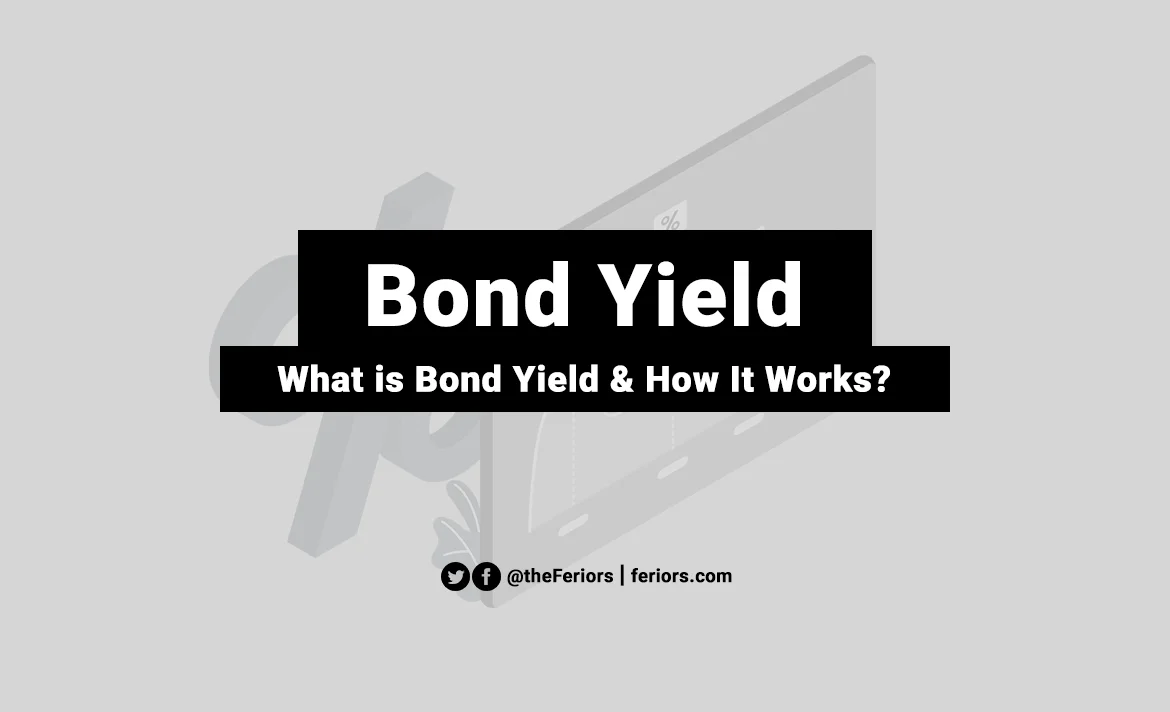Key Points
- A bond yield is the return that the investor get for a bond over a period.
- Bond yield can be calculate in many methods, but the most simply method is the current yield, calculated by dividing the bond’s annual payment by bond’s market price.
- Bond yields are inversely correlated to bond prices. As the price of a bond rise its yield fall, but when the price of a bond fall its yield will rise.
- But the bond yields are correlated with inflation, when inflation rise, interest rates rise too, and vice versa.
What is Bond Yield?
Bond yield is the return that the investor received from investing in a bond as a percentage of a bond’s price. The bond yield can be calculated by dividing the bond’s annual payment by the bond’s price. For instance, if a bond is sold at $1,000 and pays $20 per year, this bond yield is 2%.
The bond yield reflects how much the investor is able to earn on a bond, this allows investors to compare its returns to other choices of investment.
Normally, bond yields are inversely correlated to its prices. As the price of a bond rises its yield fall, but when the price of a bond falls its yield will rise. But the bond yields are correlated with inflation, when inflation rises, interest rates rise too, this is the reason why a bond with longer maturity offers a higher coupon rate since its have more chance to affect by inflation.
What is a Bond?
A bond is an agreement issued by the government or corporations to borrow money from investors when they want to raise money. An investor who buys a bond gives the bond issuer a loan, and they agree to pay back its debt in the amount of the face value at the due date. In return, the issuer promises to pay a specified rate of interest to an investor annually, semi-annually, or at another interval.
Bonds are shared some common terms that the investor needs to know, which includes:
- Face value is a price of a bond. This is amount of money that the bond issuer borrow money from investor, and need to repay at maturity.
- Maturity date is the date which the issuer will payback the bondholder by its face value.
- Coupon rate is the interest rate paid by the bond, this is fixed rate and remains the same throughout its lifetime. If a bond has face value of $10,000 and coupon payment is 1,000 per year, then coupon rate is 10% ($1,000 / $10,000 = 10%).
- Coupon date is the date that the bond issuer will pay interest to bondholder. Normally, it paid annually, or semi-annually.
- Issue price is the price of a bond that the bond issuer sells the new bonds.
How Bond Yield Matter?
The bond yield reflects how much the investor is able to earn on a bond, this allows the investor uses a bond yield compared to its returns to other choice investments, these are a basic utility of a bond yield.
Government bonds are considered as a risk-free investment compare to other investments, especially, the U.S. treasury (bonds, bills, and notes issued by the U.S. Department of the Treasury), since it’s issued by a government which means it’s hard to collapse in normal circumstances.
For this reason, the government bond yields is a tool that the investor use as a benchmark to compare with other asset class. When the treasury real yields (bond yield deducted with inflation rate) are higher than (or equal to) the risk investment, then the investor tends to invest in treasury. In contrast, if the high-risk investment is rewarded more than the government bonds, then the investor tends to reduce exposure on investing in treasury bonds and invest more in risky assets.
Normally, investors are pay attention to the 10-year U.S. treasury bond yield that’s you can follow it daily from Daily Treasuries Curve by U.S. Department of the Treasury or 10-year constant maturity rates by stlouisfed.
How to Calculate Bond Yield
A bond yield can be calculated in many ways, but the most simple and popular method is the current yield. Investors calculate bond yield to estimate how much they will earn from investing in bonds by this current yield method, which does not account for the time value of money, maturity value, or payment interval.
The current yield measures the rate of return a bondholder would earn annually from the coupon interest payment. The current yield of a bond can be calculated by dividing the bond’s annual coupon payment by the bond’s market price.
Bond yield = (Annual Coupon Payment / Bond’s Market Price) x 100
For instance, if a bond is originally sold at $1,000 (face value) and it pays interest $20 per year, this bond yield is 2% by using the ‘current yield’ method.
Bond yield = (20 / 1,000) x 100 = 2%
Premium and Discount
The bond price can be changed from its original sold since the bond has a secondary market that allows an investor to buy or sell the bond with other investors (like the stock market). So, from the above example, if that bond and its price rise to $1,100 in the secondary market, the bond’s current yield would fall to 1.8%.
And if you sell this bond at $1,100 which is a higher price than the price you paid for it, this is called trading at a premium. Trading at a discount is the opposite, if you sell this bond at $900 which is a lower price than the price you bought, this is called trading at a discount.
Although an investor buys this bond at $1,100, on the maturity date the bond issuer still repays at $1,000 as its par value to the bondholder.
References:
- What are bonds? – U.S. Securities and Exchange Commission
- What is a bond? A way to get income & stability – Vanguard




